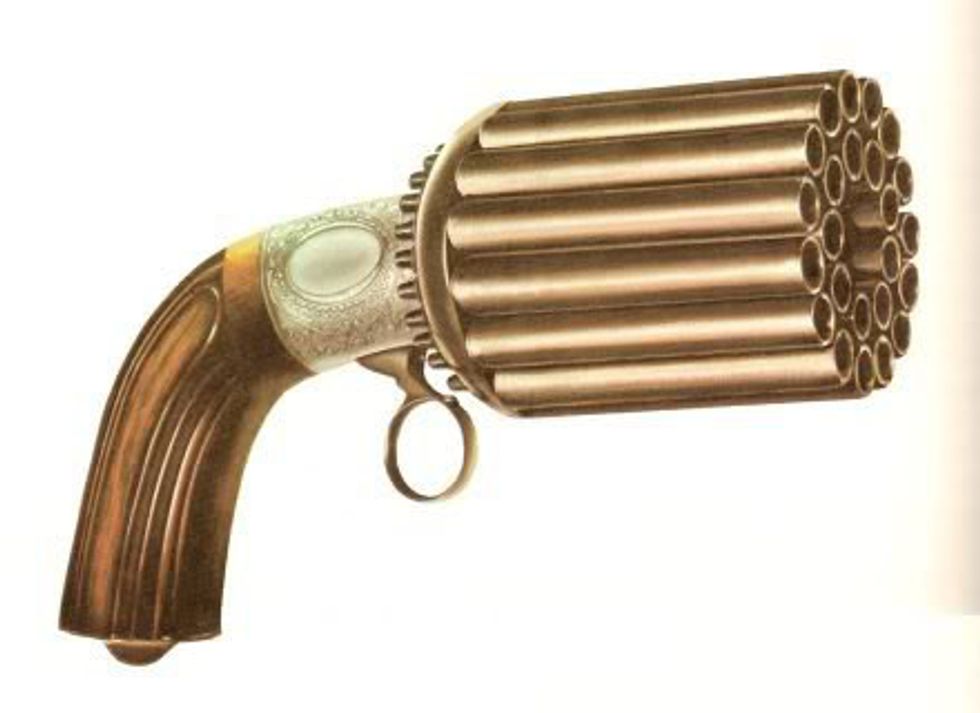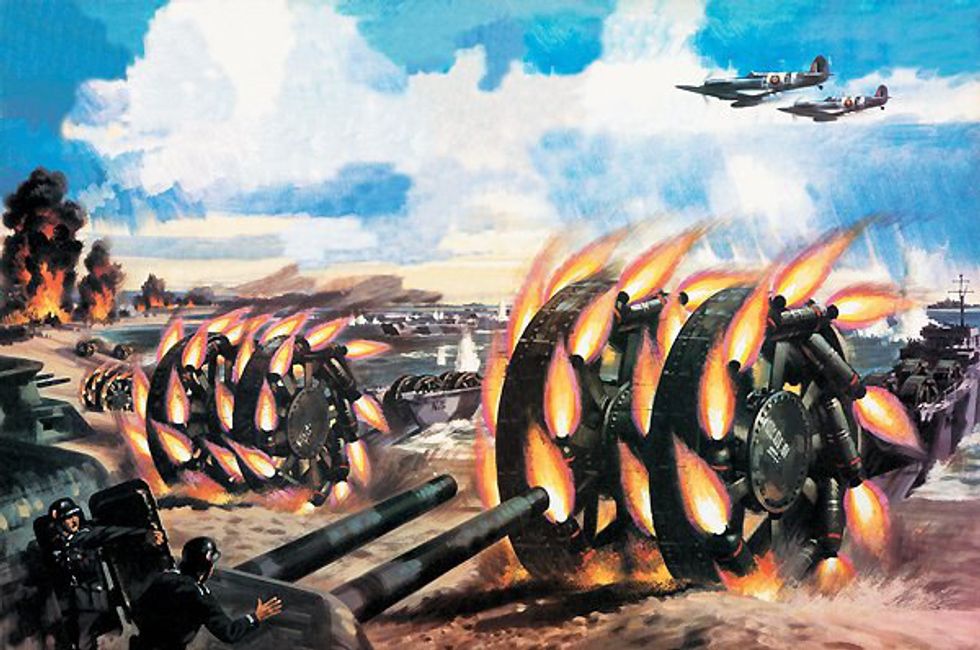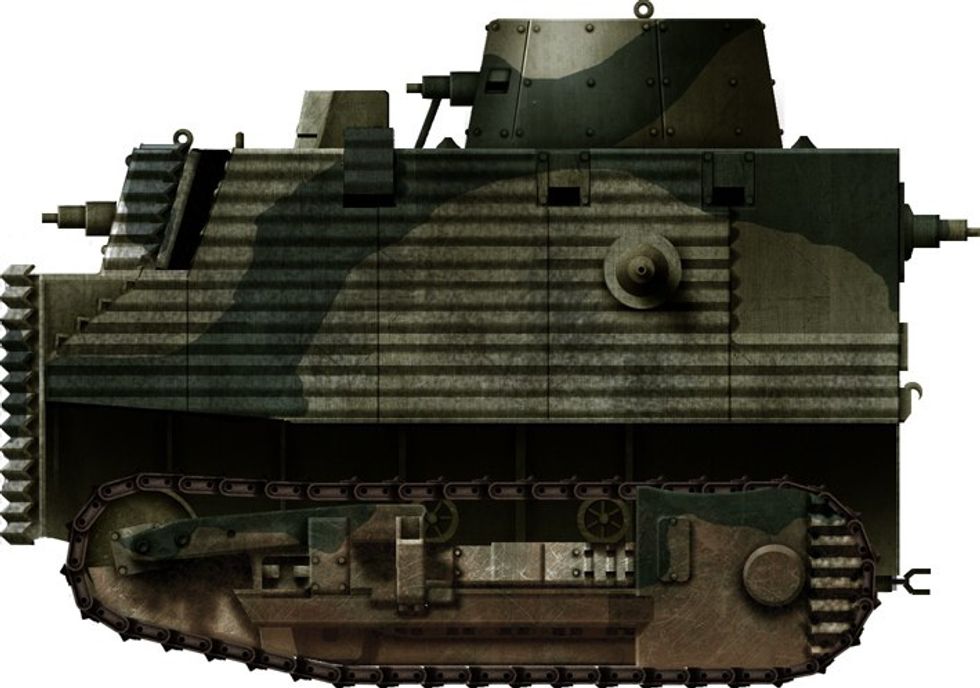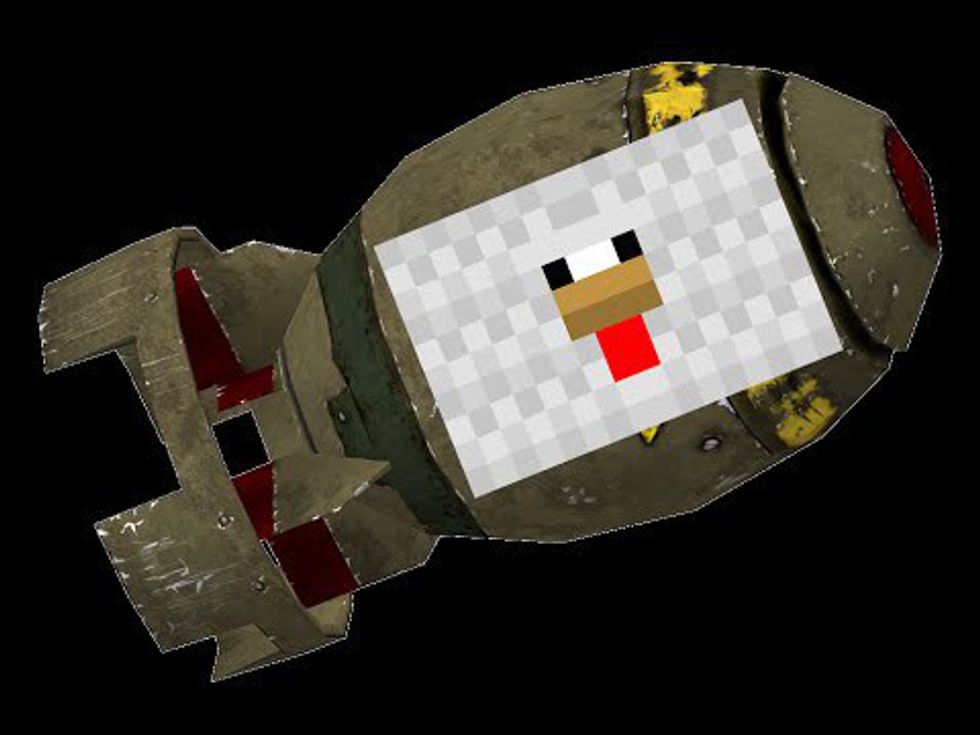As long as there have been people, there has inevitably been conflicts. Since the dawn of mankind, warfare has been an integral part of society with each side trying to design the best ways to kill each other. However, these endeavors do not always produce the desired results; quite the opposite at times. Here are five of the stupidest weapons ever made.
1. The Wrist Breaking Gun
Recommended for you
The pepperbox design, while actually stemming from a 15th century model, was reintroduced during the middle of the 19th century. It was an odd design that combined rotating barrels and the layout of a nerf gun. Whilst popular, the weapon suffered from many drawbacks. For one, the weight; as you can see in the picture, the gun was obviously very front heavy, destroying any chance of aiming you may have had.
In addition, in some models, the hammer of the gun blocked the sight if the pistol had any of those to begin with. In addition, due to the primitive basis, sometimes instead of firing a single shot, the pistol would clusterfuck and fire every barrel at once potentially breaking the user's wrist, or exploding. Even if the gun was successfully fired, on the larger models it was believed it would take over an hour to reload the potential 32 barrels of the weapon.
2. Britain’s Explosion Powered Wheel
The Second World War pushed weapons development to the limits of human ingenuity. However, any person can tell you that ingenuity and stupidity can sometimes share the same bed.
Enter the Panjandrum, Britain's attempt at creating a barricade breaching explosive. This explosive device, a cross between a bomb and Ferris wheel, was intended to be launched from ships and roll up beaches to destroy barricades. It somehow managed to fail at both these tasks. The device was powered by several, and by several I mean up to 70, rockets by the end of its life which propelled the Panjandrum forward. However, it had a tendency to lose control. During one of the tests, the wheel somehow turned around and came careening back into the ocean. Attempts to stabilize the weapon, such as adding steering wires and a third wheel, made it even more dangerous as the aforementioned rockets tended to come loose and shoot all over a public beach.
That’s right, they tested an experimental explosive weapon on a popular beach in full view of tourists and vacationers. The project never made it past testing phase, perhaps for the best.
In 2009, to celebrate the 65th anniversary of D-Day, a replica of the weapon was constructed and launched. It still didn’t work.
3. The Gun You Literally Threw Away
After America entered WWII, it sought many new ways to aid the beleaguered occupied forces in Europe still attempting to force out the German invaders. The attempt was halfhearted at best.
The U.S. Army’s Joint Psychological Warfare Committee developed the FP-45 Liberator Pistol. These cheap guns would be airdropped into occupied territories and allow for resistance fighters to kill enemy soldiers and take their weapons. They were literally guns made to get others guns.
The pistols were cheaply made. After the gun was fired, the shell casing remained inside the pistol and had to be poked out with a stick, and the pistol only came with a set of cartoon instructions in the hope that non-English speakers could figure out how it worked.
Tests on the weapons found that some of the guns would fall apart after only 10 rounds but were still projected to be effective in a manner akin to hijacking a moving car by catching up to it on a skateboard. Other countries that were supposed to receive these guns were understandably skeptical and of the million produced only a tiny portion ever saw combat.
4. New Zealand's Tractor Tank
Again during WWII, when military resources were stretched and manpower was thin across the globe, Australia and New Zealand appealed to the UK to supply them with armored fighting vehicles. When they were denied, New Zealand took initiative and decided to build their own. Unfortunately for New Zealand all they had on hand was caterpillar tractors and a picture of a tank. With all the bravado of a DIY enthusiast and the danger of invasion at your door, the country set out to create its own line of armored vehicles.
The Bob Semple tank ended up being a 12-foot-high box with seven people stuffed inside, all lying on a mattress on top of the driver. In addition, New Zealand lacked any sort of armor plating for the tanks, so instead welded iron plates to the tractor in the hope that would be enough. Every source I’ve read phrases this as “believed to deflect gunfire.” It suffered multiple problems, as it’s a tractor and not made to move quickly and had to be completely stopped to shift gears. The Bob Semple tanks were used for parades to inspire the public and then quietly dismantled.
5. Britain’s Chicken Powered Nuke
For whatever reason, militaries have this need to give things cool names. This nuclear weapons project went through three iterations because apparently Britain couldn’t decided on what animal motif they wanted to use, cycling through Brown Bunny, Blue Bunny and then finally Blue Peacock.
The weapon was intended to be buried in Germany to deter an invasion by the Soviets during the '50s by placing a 10-kiloton nuclear device into the ground. The idea was to place 10 of these nuclear mines around the North German Plain, ready to detonate in case the Soviet Union got frisky regarding the recently divided Germany.
When the files on the project were declassified in 2004, the public believed that this bomb and its design was a joke. An unveiling of a document produced in 1957 revealed the bizarre idea to bury the bomb with chickens loaded inside. The electronics at the time were sensitive and required heat to operate especially in the winter. The warmth of the chickens would be suitable to keep the wiring and electronics from freezing and the placement of chicken wire inside the nuclear device would keep the birds from pecking away them.
Like most of the weapons on this list, these devices never saw usage. They did come close, however, as two prototypes were built and one still exists on display at the Atomic Weapons Establishment Historical Collection.























